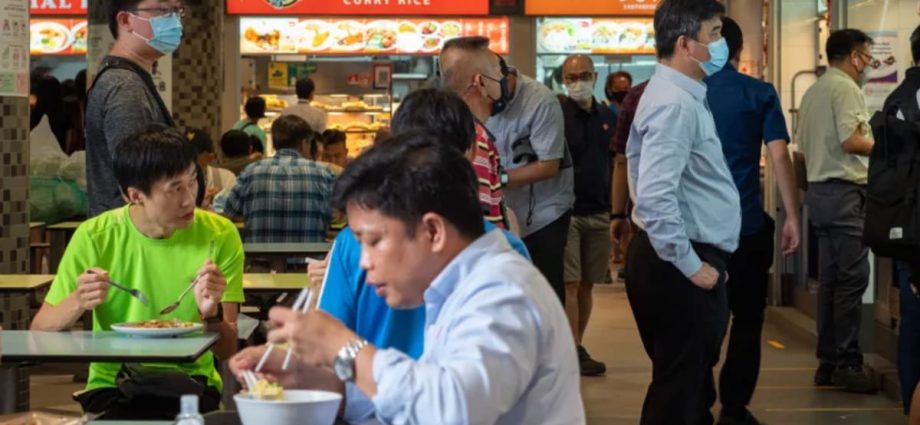
SINGAPORE: Despite the rising costs of operating a food stall in hawker centres, food courts and kopitiams, many stall owners did not increase prices between late last year and early this year, a study has found.
Of those who did, the majority increased prices only by a small margin – not exceeding 30 cents for each food item they sold – for fear of driving their customers away. And for most food items surveyed, price increases did not exceed 10 cents on average.
The study by the Institute of Policy Studies (IPS), released on Monday (Mar 13), also found that the drink iced Milo had the highest relative increase in prices, going up by 12 cents, or 7 per cent on average. A total of 23 out of 55 stalls surveyed raised their prices of the drink, whereas the rest did not.
Sliced fish soup with rice went up by 28 cents, or about 5 per cent, and fishball noodles rose by 19 cents, which is also about 5 per cent. Seven out of 19 sliced fish soup sellers surveyed raised prices for the dish, and 11 out of 30 fishball noodle sellers did the same.
The study was done by recording food and drink prices from 829 food establishments between September and November 2022.
After the increase in Goods and Services Tax (GST) in Jan 1 this year, researchers revisited 50 establishments, comprising a total of 263 individual stalls, in January and February this year to record any price changes.
The researchers said that the study served to “examine the effects, if any, of the increase of the GST on food prices”.
The study, titled The Cost of Eating Out: Findings from the Makan Index 2.0, was conducted by IPS researchers Teo Kay Key, Hanniel Lim, and Mindy Chong.
The researchers said that the survey was conducted as a way to better understand the costs of living in Singapore and does not provide any value judgement on the pricing strategy of food establishments.
As food and drink prices were collected mainly through menus at stalls, the researchers said that some prices might be understated especially if menu prices were not updated regularly.
Also, the smaller number of establishments revisited was partly because many had later closed down or changed hands, they added.
WHY IT MATTERS
The study comes amid the rising cost of living, with Singapore’s core inflation rate rising by 5.5 per cent in January, the fastest pace in more than 14 years.
It also comes shortly after the GST was increased from 7 per cent to 8 per cent on Jan 1.
Around 7.4 per cent of a household’s expenditure is spent on the types of food that hawker centres, food courts and coffee shops serve, according to the Household Expenditure Survey in 2017 and 2018. In comparison, only 6.4 per cent of expenses are spent on recreation and culture and 5.5 per cent of expenses are spent on health.
“Given the culture of eating out in Singapore, many Singaporeans are likely to head to one of these food establishments to have their meals if they decide not to prepare their own meal at home,” the researchers stated in the executive summary of their report.
“Examining data on food prices in these locations thus allows us to examine trends on price variations based on different factors and derive the estimated eating-out budget of an average Singaporean, which will further (aid) understanding on one aspect of living costs in Singapore.”
WHAT THE STUDY FOUND
Researchers studied a variety of food and drink items commonly consumed during breakfast, lunch or dinner. They also took into account dietary restrictions when selecting which food items to consider.
A total of 18 items were included in the study, including kopi-o (black coffee), breakfast sets (kaya toast, two soft-boiled eggs and a coffee or tea), mee rebus, wanton noodles, economy rice (two vegetables and one meat), and economy bee hoon sets (bee hoon with fried egg and chicken wing).
Researchers then collected drink and food prices from the menus of 829 food establishments, comprising 92 hawker centres, 101 food courts and 636 kopitiams within 26 residential neighbourhoods in Singapore.

